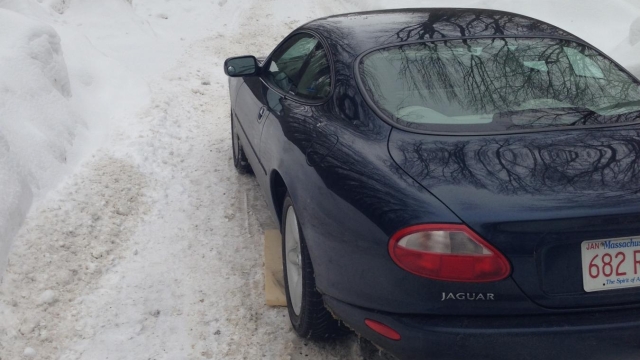Plumbing Puzzles: Tackling Common Household Pipe Problems
Introduction:
Plumbing problems are a headache that no homeowner wants to deal with. From an acute clog causing water to back up, to a faulty heater leaving you shivering in the cold, any type of plumbing issue can quickly disrupt your daily routine and cause unnecessary stress. Whether you’re a seasoned DIY enthusiast or a first-time homeowner, learning how to handle these common household pipe problems can save you time, money, and plenty of frustration. In this article, we’ll explore some practical tips and tricks to help you overcome plumbing puzzles with confidence and ease. So roll up your sleeves, grab your toolbox, and let’s dive into the fascinating world of home plumbing!
Section 1: Dealing with Acute Clogs
Acute clogs can be a frustrating and common plumbing issue in many households. When faced with a sudden blockage in your pipes, it’s important to tackle the problem swiftly and effectively. Here are some steps you can take to deal with acute clogs:

Inspect the drain: Start by examining the affected drain closely. Look out for any visible debris or objects that may be causing the clog. Sometimes, items like hair, soap residue, or food particles can accumulate and cause a blockage. If you can see the source of the clog, try gently removing it with a pair of gloves or a small tool, being careful not to push it further into the pipe.
Plunge the drain: If you cannot visually identify the clog, using a plunger can often do the trick. Make sure there is enough water in the sink or tub to cover the plunger cup. With a firm grip on the handle, create a tight seal over the drain and vigorously plunge up and down for about 20 seconds. This action can help dislodge the blockage and allow the water to flow freely again.
Try a drain cleaner: In cases where the clog persists, a chemical drain cleaner can be used as a last resort. Follow the instructions on the product carefully, as some cleaners require specific dilution or handling precautions. Pouring the cleaner down the drain and allowing it to sit for the recommended time can help dissolve the clog and restore proper drainage.
Remember that while these steps can be effective in dealing with acute clogs, it is always advisable to seek professional help if the issue persists or if you are unsure about performing any plumbing tasks yourself. Taking preventive measures regularly, such as using drain stoppers or hair catchers, can also help minimize the occurrence of clogs and keep your plumbing system running smoothly.
Section 2: Troubleshooting Faulty Heaters
In this section, we will discuss some common issues that can arise with household heaters and how to troubleshoot them effectively.
Lack of Heat: If your heater is not producing any heat, there could be a few potential causes. First, check if the thermostat is set to the desired temperature. If it is, ensure that the power supply is connected and functioning properly. Additionally, make sure that the circuit breaker for the heater is not tripped. If none of these seem to be the problem, there could be an issue with the heating element itself, and it may need to be replaced.
Insufficient Heat: If your heater is not providing enough warmth, there are a few things you can check. Start by inspecting the air filters, as dirty or clogged filters can impede proper airflow. Clean or replace them if necessary. If the filters are clean, but you still aren’t receiving sufficient heat, there may be a problem with the blower motor or the fan. Consider calling a professional to inspect and repair these components.
Strange Noises: Unusual noises coming from your heater can be a cause for concern. Rattling or banging sounds may indicate loose or broken parts within the system. Turn off the heater and carefully inspect its interior. If you notice any damaged or loose components, it is best to consult a professional technician for repairs. Ignoring these noises can lead to further damage or potential safety risks.
installateur notdienst wien
Remember, troubleshooting a faulty heater can sometimes require specialized knowledge and skills. It is crucial to prioritize your safety and consider seeking professional help if you are uncertain about any repairs. By addressing these issues promptly, you can ensure that your household remains comfortable and your heater functions optimally.
Section 3: Addressing Other Common Plumbing Issues
In addition to acute clogs and faulty heaters, there are several other common plumbing issues that homeowners may encounter. Let’s take a look at three more prevalent problems and explore their potential solutions.
Leaky Pipes:
One of the most frustrating plumbing issues is a leaky pipe. Not only does it waste water, but it can also cause damage to your home. If you notice a pool of water near a pipe or discover damp patches on the walls or ceiling, it’s crucial to address the issue promptly. Start by shutting off the water supply to that specific area and then inspect the pipe carefully. Depending on the severity of the leak, you may be able to temporarily fix it using pipe tape or epoxy putty. However, it’s advisable to seek professional help to ensure a lasting and secure solution.Running Toilets:
A running toilet can be both annoying and expensive, as it continuously wastes water. The issue is usually caused by a faulty flapper valve or a malfunctioning fill valve. To resolve this problem, first, remove the tank lid and check the flapper valve. If it appears worn or damaged, it may need to be replaced. Alternatively, adjust the fill valve if it is not functioning correctly. If these troubleshooting steps do not solve the issue, contacting a plumber will help diagnose and fix the problem efficiently.Low Water Pressure:
Low water pressure can diminish the comfort and functionality of various household tasks, such as showering or washing dishes. Several factors can contribute to this problem, including mineral deposits, pipe blockages, or malfunctions in the water supply line. To address low water pressure, start by checking the aerators on faucets. If they appear clogged, remove and clean them thoroughly. If this doesn’t improve the water pressure, it may be necessary to call a professional plumber to assess and resolve the underlying cause.
By understanding and addressing these common plumbing issues, homeowners can ensure a more efficient and comfortable living environment. However, remember that when in doubt, consulting with a qualified plumber is always a wise decision.



